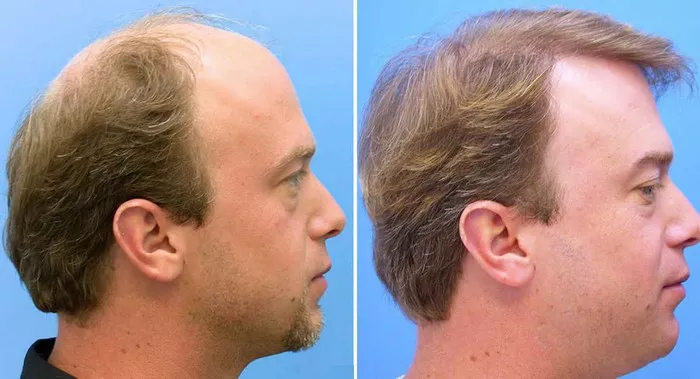When undergoing a Follicular Unit Extraction (FUE) hair transplant, many individuals seek ways to discreetly manage their post-transplant appearance during the healing process. Whether it’s for privacy or simply to maintain a natural look, there are several effective strategies to help you hide your FUE hair transplant. In this comprehensive guide, we’ll explore these strategies in detail to ensure you achieve the desired results while keeping your transplant under wraps.
1. Choosing the Right Hairstyle
The key to concealing your FUE hair transplant lies in selecting an appropriate hairstyle. Here are some tips to consider:
a. Long Hairstyles
Long hair can effectively hide the donor and recipient areas, making your FUE transplant virtually undetectable. Styles like layered cuts or loose waves work exceptionally well.
b. Layered Haircuts
Layered cuts can create volume and texture, allowing you to camouflage any temporary imperfections in the donor or recipient areas.
c. Fringe or Bangs
If your FUE transplant is on the front hairline, consider incorporating fringe or bangs into your hairstyle to cover the area while it heals.
2. Using Concealing Products
Several cosmetic products can help conceal your FUE hair transplant during the recovery phase:
a. Concealer Sprays
Concealer sprays, specifically designed for hair, can effectively cover any redness or scabbing in the recipient area.
b. Hair Fibers
Hair fibers, made from natural keratin, can be sprinkled onto the scalp to add thickness and cover any thinning or bald spots.
3. Scalp Micropigmentation (SMP)
Scalp micropigmentation is a non-invasive procedure that involves tattooing tiny pigment dots on the scalp to mimic the appearance of hair follicles. It’s an excellent option for adding density and concealing scars from FUE harvesting.
a. Achieving a Natural Look
Ensure that the SMP practitioner you choose has experience in creating a natural look that complements your skin tone and hair color.
b. Maintenance
SMP may require periodic touch-ups to maintain its appearance, so discuss the long-term maintenance plan with your practitioner.
4. Wearing Headwear Strategically
Hats and headwear can be valuable tools for concealing your FUE hair transplant:
a. Baseball Caps
Wearing a baseball cap is a simple way to hide your transplant during the healing process. Opt for breathable materials to avoid irritation.
b. Scarves and Bandanas
For those who prefer a different style, scarves or bandanas can be tied creatively to cover the treated areas.
5. Post-Transplant Hair Care
Proper hair care post-FUE transplant can promote faster healing and minimize visibility:
a. Gentle Shampooing
Use a gentle, sulfate-free shampoo recommended by your transplant specialist to cleanse your hair and scalp without causing damage.
b. Avoiding Sun Exposure
Protect your scalp from direct sunlight, as it can cause discomfort and slow down the healing process. Use a hat or sunscreen when outdoors.
c. Scalp Massage
Gentle scalp massages can improve blood circulation and aid in the healing process. However, be cautious not to apply excessive pressure.
6. Consultation and Follow-up with Your Specialist
Lastly, staying in touch with your FUE hair transplant specialist is crucial for optimal results:
a. Post-Transplant Checkups
Attend all recommended follow-up appointments to ensure your healing is progressing as expected.
b. Addressing Concerns
If you have any concerns about the healing process or the appearance of your transplant, discuss them openly with your specialist. They can provide guidance and reassurance.
See Also: Can You Be Too Bald for a Hair Transplant: A Quick Guide
In conclusion
Concealing your FUE hair transplant is a manageable process with the right strategies and care. Whether you opt for a specific hairstyle, cosmetic products, or scalp micropigmentation, the goal is to achieve natural-looking results while maintaining your privacy. Remember to consult with your FUE specialist for personalized advice and to address any concerns during the healing journey. By following these expert tips, you can confidently manage your post-transplant appearance and enjoy the long-term benefits of your FUE procedure.


